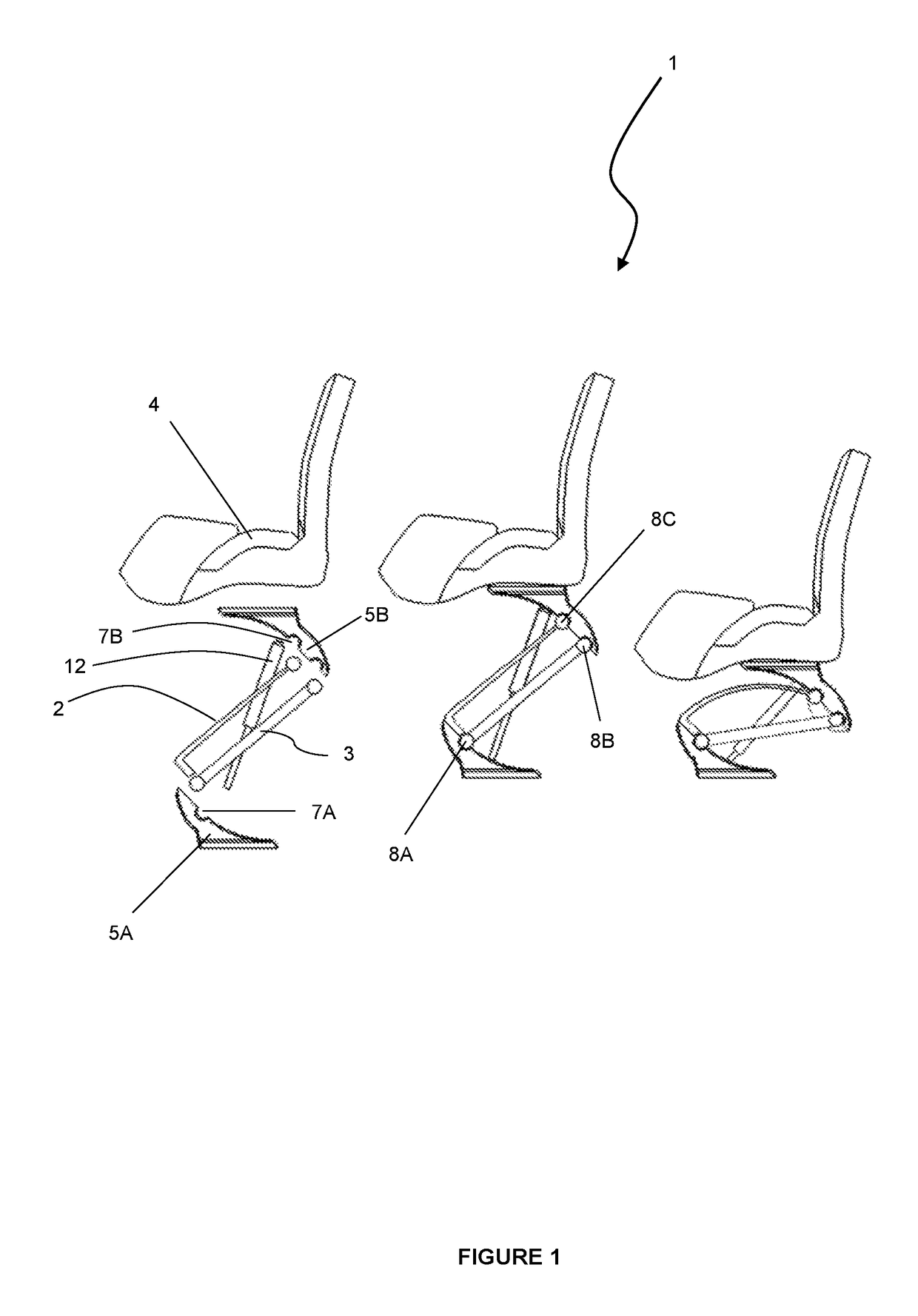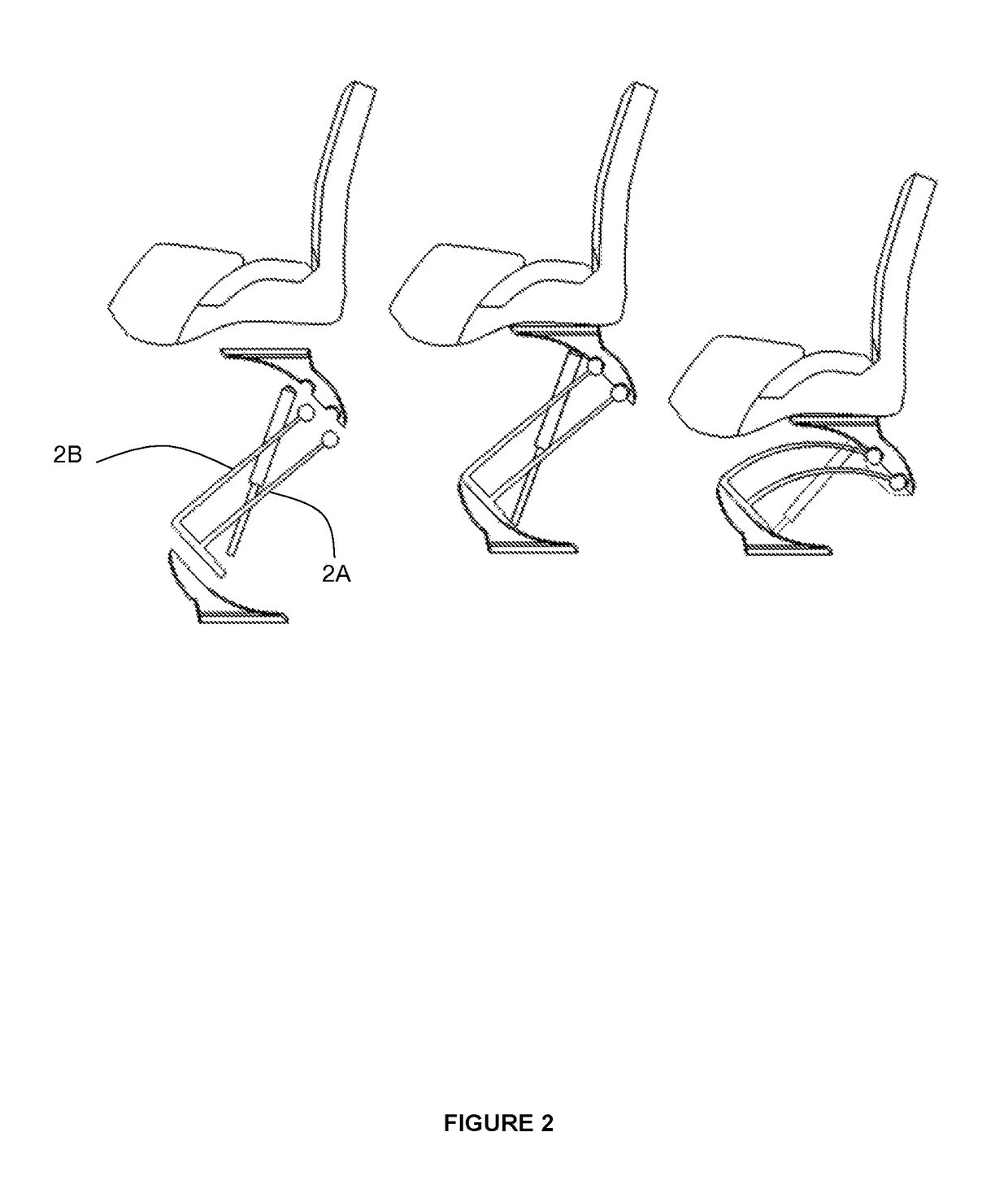Shock mitigation apparatus
a technology of shock mitigation and apparatus, which is applied in the direction of shock absorbers, vessel parts, vessel construction, etc., can solve the problems of high-performance watercraft, physical injury, and passengers subjected to repetitive high g-forces, and achieve the effect of easy configuration
- Summary
- Abstract
- Description
- Claims
- Application Information
AI Technical Summary
Benefits of technology
Problems solved by technology
Method used
Image
Examples
working examples
[0135]The above described shock mitigation apparatus and uses are now described by reference to specific embodiments and examples.
example 1
Single Cantilever Leaf Spring Combined with Stabiliser Stabilizer Arm
[0136]Referring to FIG. 1, a series of side views of a shock mitigation apparatus 1 that includes one leaf spring 2 and a stabilizer arm 3 are shown (from left to right): an unassembled apparatus 1 with exploded view of components, an assembled apparatus 1 upon an upward rebound stroke, and an assembled apparatus 1 during a compression stroke.
[0137]The shock mitigation apparatus 1 also includes a seat member 4 in the form of a pommel design as illustrated and lower and upper mount members 5A,B manufactured out of injection moulded plastic in known fashion. The lower mount member 5A is attached to the sole of a boat (not shown) with fasteners and reinforcing plates / washers (not shown) in known fashion. Optionally, and best seen in FIG. 12, the lower mount member 5A may be securely mounted to a base assembly in the form of a plinth 6 and in turn attached to the sole of the boat.
[0138]The lower mount member 5A include...
example 2
Springs with Free Moving Pivots at the Same End
[0147]Referring to FIG. 2, a series of side views of a shock mitigation apparatus 1 that includes a pair of lower and upper leaf springs 2A,B in a substantially parallel arrangement with respect to each other with pivotal ends on the same mount member is shown (from left to right): an unassembled apparatus 1 with exploded view of components, an assembled apparatus 1 upon an upward rebound stroke, and an assembled apparatus 1 during a compression stroke.
[0148]As shown, the leaf springs 2A,B flex along their length and pivot at the same end with respect to each other as a consequence of the pivotal ends of the springs 2A,B being mounted to the same upper mount member 5B. Conversely, the fixed end of the springs 2A,B are fixedly retained on the lower mount member 5A.
[0149]An advantage of this configuration is the symmetry of the leaf springs 2A,B which maintain the seat member 4 at the same tilt angle during upward rebound and compression ...
PUM
 Login to View More
Login to View More Abstract
Description
Claims
Application Information
 Login to View More
Login to View More - R&D
- Intellectual Property
- Life Sciences
- Materials
- Tech Scout
- Unparalleled Data Quality
- Higher Quality Content
- 60% Fewer Hallucinations
Browse by: Latest US Patents, China's latest patents, Technical Efficacy Thesaurus, Application Domain, Technology Topic, Popular Technical Reports.
© 2025 PatSnap. All rights reserved.Legal|Privacy policy|Modern Slavery Act Transparency Statement|Sitemap|About US| Contact US: help@patsnap.com



